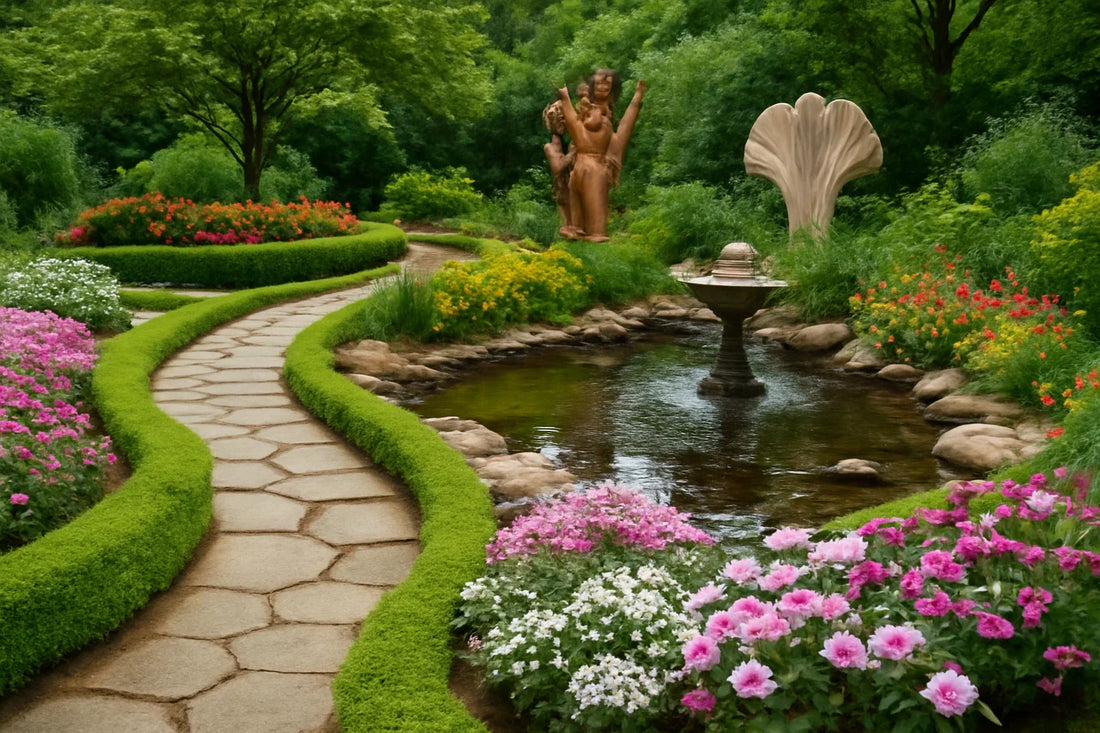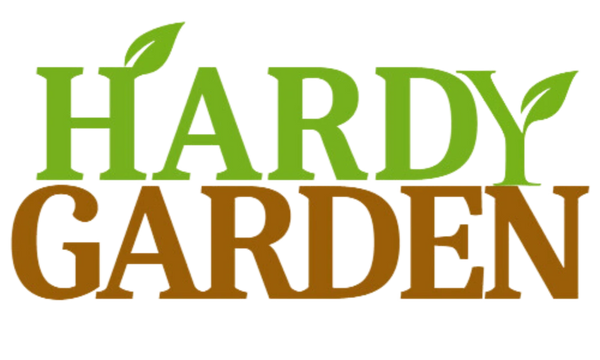
How to Beautify Your Garden Naturally with Ornamental Gardening
Share
A beautiful garden doesn’t have to be complicated. With a few thoughtful choices, you can create a space that feels peaceful, looks stunning, and works in harmony with nature. That’s the power of ornamental gardening—using plants, design, and natural elements to make your garden more visually appealing.
Ornamental gardening isn’t just about looks. It can attract pollinators, improve the environment, and give you a calm, relaxing place to enjoy.
In this blog, we’ll show you how to make your garden naturally beautiful using simple design ideas, eco-friendly tips, and the right plants to bring your outdoor space to life.
What Is Ornamental Gardening?
Ornamental gardening is the art of growing plants primarily for their visual appeal. Instead of focusing on crops or food, this type of gardening highlights beauty, color, texture, and design. From vibrant flowers and lush shrubs to decorative grasses and climbing vines, ornamental gardens create spaces that are both relaxing and inspiring.
These gardens can range from formal, symmetrical layouts to wild, nature-inspired landscapes. Many also include features like fountains, stone paths, or statues to enhance the aesthetic. Whether it’s a backyard retreat or a decorative front yard, ornamental gardening adds charm, personality, and a touch of nature’s beauty to any outdoor space.

Principles of Natural Ornamental Gardening
1. Work with Nature, Not Against It
A natural garden thrives when you choose plants that suit your local climate, soil, and sun conditions. Native and climate-friendly plants are easier to maintain, attract local wildlife, and help your garden stay healthy with less effort.
2. Emphasize Native and Climate-Friendly Plants
These plants are adapted to your environment, meaning they need less water, resist pests, and grow more easily—making your garden both beautiful and sustainable.
3. Layering & Texture
Create depth by planting a mix of tall, medium, and low-growing plants. Use a variety of leaf shapes and sizes to add interest. This makes your garden look fuller and more dynamic.
4. Combine Different Plant Heights, Leaf Types, and Blooms
Mixing textures and heights keeps the garden visually engaging from every angle. It also helps fill space naturally and reduces the need for constant weeding or trimming.
5. Color Harmony
Use seasonal color schemes and group plants with colors that complement each other. Think calming greens with soft purples, or bold reds paired with golden yellows.
6. Seasonal Color Palettes and Complementary Plant Combinations
Plan your garden so something is always blooming. Pair colors that work well together and change with the seasons to keep your space looking fresh year-round.
7. Organic Shapes and Layouts
Avoid overly straight lines or rigid shapes. Let paths curve and garden beds flow naturally. This gives your space a relaxed, more natural feel that invites people in.
8. Avoid Rigid Symmetry—Let the Garden Flow
Natural gardens don’t need perfect balance. Instead, aim for a sense of movement and softness that mirrors how plants grow in the wild.

Choosing Plants for Natural Ornamental Appeal
Picking the right plants is key to creating a naturally beautiful garden. Look for varieties that fit your local climate, are easy to care for, and bring color, texture, or structure to your space. Here are some great plant types to consider:
1. Native Plants
Native plants grow naturally in your region, so they’re already adapted to your weather and soil. They’re low-maintenance, support local wildlife, and often need less water or fertilizer.
Examples:
- Eastern U.S. – Black-eyed Susan, Purple Coneflower
- Southwest – Desert Marigold, Agave
- Pacific Northwest – Oregon Grape, Red-flowering Currant
2. Flowering Shrubs and Perennials
These plants bloom year after year and don’t need to be replanted. They add lasting color and structure to your garden while being easy to care for. Popular choices: Hydrangeas, Lavender, Daylilies, Salvia
3. Grasses and Foliage Plants
Ornamental grasses and leafy plants add movement and texture. They sway in the breeze and look great even when not in bloom.
Examples: Fountain Grass, Hostas, Ferns, Heuchera
4. Climbing Plants and Vines
These are perfect for adding vertical beauty. Train them on trellises, fences, or arches to soften hard edges and create lush garden walls.
Examples: Clematis, Climbing Roses, Jasmine, Sweet Pea
By combining these different types of plants, you can create a garden that looks full, natural, and beautiful in every season—without requiring too much upkeep.

Elements to Elevate Garden Aesthetics
Here are some easy ways to take your garden's look to the next level:
1. Garden Borders & Edging
Define your garden spaces with natural materials like stones, mulch, or flowering plants. Borders help keep things tidy and give the garden a clean, organized look.
2. Pathways and Flow
Use gravel, stepping stones, or curved paths to guide people through your garden. These paths create a sense of movement and make your space feel more inviting.
3. Water Features
Even a small fountain or pond can make a big impact. Water adds relaxing sounds and a peaceful vibe to your garden, attracting birds and other wildlife too.
4. Natural Sculptures & Art Pieces
Decorate with simple, earthy accents like wooden carvings, upcycled items, rock arrangements, or a birdbath. These pieces give your garden personality and a creative touch.
5. Vertical Spaces
Make the most of your space by going up! Use hanging baskets, wall planters, or living walls to add greenery to fences, patios, or small areas. It brings color and life to otherwise empty spots.

Creative Ideas to Personalize Your Ornamental Garden
Make your garden feel truly yours by adding personal and creative touches. Here are some fun and easy ways to do that:
1. Themed Corners
Create small areas with a special focus. For example:
-
A butterfly garden with flowers that attract butterflies
-
An herb spiral for growing herbs in a pretty spiral shape
These mini-themes make your garden more interesting and fun to explore.
2. Reuse Vintage Items
Give old items a new life! Use old watering cans, tea pots, or wooden crates as unique planters or decorations. It adds charm and reduces waste.
3. Add Handcrafted Touches
Make your garden special with DIY details like:
- Painted pots with your favorite colors or patterns
- Mosaic stepping stones made from tiles or broken dishes
These little handmade elements add personality and make your space feel extra welcoming.

Purposes of Ornamental Gardening
- Aesthetic Appeal – Enhances the beauty of outdoor and indoor spaces with colorful, textured, and visually pleasing plants.
- Relaxation and Mental Well-being – Creates a calming environment that promotes peace and reduces stress.
- Personal Expression – Allows gardeners to express creativity and style through plant selection and garden design.
- Habitat for Pollinators – Attracts birds, bees, and butterflies, supporting local biodiversity.
- Educational Value – Offers a learning opportunity about plant types, garden design, and environmental care.
- Social Enjoyment – Creates a welcoming space for gatherings, entertaining, or quiet reflection.
Conclusion
Ornamental gardening is a wonderful way to bring natural beauty into your outdoor space. With the right plants, creative touches, and eco-friendly care, you can create a garden that’s both relaxing and full of life.
Remember, you don’t have to do everything at once—start small, try new ideas, and enjoy the process of watching your garden grow.
Have a favorite ornamental plant or a garden tip to share? We’d love to hear from you! Drop a comment below and let’s grow together.
